
Real Estate Businesses: Tips on Getting Approved for a New Mortgage
 Do you own a real estate business? If so, you probably know the importance of securing mortgages. Mortgages are loans used to purchase property. Whether you’re a real estate developer or investor, you’ll need mortgages to purchase properties. Here are several tips on how to get approved for a new mortgage.
Do you own a real estate business? If so, you probably know the importance of securing mortgages. Mortgages are loans used to purchase property. Whether you’re a real estate developer or investor, you’ll need mortgages to purchase properties. Here are several tips on how to get approved for a new mortgage.
#1) Enhance Your Credit Score
While it may sound obvious, it’s worth emphasizing the importance of your FICO credit score in your mortgage application. Lenders closely scrutinize your credit history, considering factors such as your payment track record, any past delinquencies, your available credit, and, most critically, your FICO credit score. To increase your odds of mortgage approval, it’s advisable to obtain your credit report and take proactive measures to rectify any negative marks that could hinder your application.
#2) Choose the Right Mortgage Type
The type of mortgage you opt for can significantly influence your likelihood of approval. While some buyers may lean towards a 15-year mortgage, thinking it will allow them to pay off their property sooner and save on overall interest costs, lenders may have reservations about these loans due to their higher monthly payments. If you find yourself turned down for a 15-year mortgage, consider applying for a more conventional 30-year loan instead.
#3) Amplify Your Down Payment
Think about the amount you plan to put down as a down payment on your prospective property. A larger down payment can substantially boost your chances of loan approval. The reasoning here is straightforward: a sizable down payment translates to a smaller loan amount. This reduction in the loan amount diminishes the lender’s risk and enhances your likelihood of securing approval. While it doesn’t guarantee approval, a substantial down payment can be a persuasive factor in your favor.
#4) Delay New Credit Applications
It’s wise to refrain from opening any new lines of credit until after you’ve successfully secured your mortgage. Whether it’s a retail store credit card, an auto loan, a personal loan, or any other form of credit, it’s best to hold off until your mortgage is finalized. Why? Because new lines of credit have the potential to negatively impact your FICO credit score, raising the risk of a mortgage rejection.
Obtaining a new mortgage can be a complex process, but by giving careful attention to these essential factors, you can enhance your chances of successfully securing the financing needed to make your new property a reality. Remember, thorough preparation sets the stage for a smoother and more confident property-buying journey.
Have anything else that you’d like to share? Let us know in the comments section below!

Working Capital Loans: Essential Funding for Daily Operations
 Business loans come in different types. There are general-purpose business loans that can be used to cover a variety of expenses, and there are specific-purpose business loans that are used to cover a type of expense. Working capital loans fall under the latter category. For a better understanding of working capital loans and how they work, keep reading.
Business loans come in different types. There are general-purpose business loans that can be used to cover a variety of expenses, and there are specific-purpose business loans that are used to cover a type of expense. Working capital loans fall under the latter category. For a better understanding of working capital loans and how they work, keep reading.
What Are Working Capital Loans?
Working capital loans are business loans that are used to cover every day business-related expenses. They aren’t used to purchase equipment or other long-term assets. Instead, working capital loans are used to cover operational expenses like rent, inventory and payroll. Work a working capital loan, new and early-stage businesses can stay afloat while they continue to grow and, hopefully, become profitable.
How Working Capital Loans Work
As a form of debt financing, working capital loans require repayment. You can apply for a working capital loan at banks and other lenders. Depending on the specific type of working capital loan for which you are applying, the lender may look at your credit to determine whether you are a good candidate.
Unsecured working capital loans typically require a high credit score. It shows that you are able to repay your debt, so lenders will be more likely to give you a working capital loan. Secured working capital loans are based on collateral. Therefore, most lenders pay little or no attention to credit scores for secured working capital loans. You can get a secured working capital loan regardless of your credit; you just need to provide collateral.
Reasons to Consider a Working Capital Loan
A working capital loan offers a convenient source of capital for new and early-stage businesses. It can take at least several years for startups to become profitable. During this time, they’ll burn through their available capital. Fortunately, there are financing solutions available, one of which is a working capital loan. A working capital loan will allow these new and early-stage businesses to keep their doors open during their early years.
Working capital loans are fast. The have a shorter approval process than many other types of loans. The end result is faster capital with which entrepreneurs can finance their operations.
Entrepreneurs don’t have to give up ownership of their businesses with working capital loans. Only equity financing involves the sale of ownership. Working capital loans are debt financing, so this isn’t an issue.
Have anything else to add? Let us know in the comments section below!
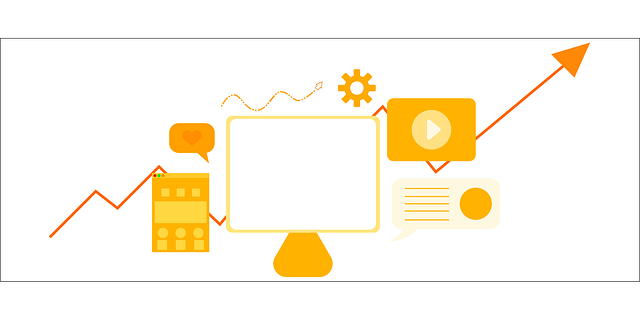
Key Financial Metrics Every Business Owner Should Monitor
 What financial metrics do you monitor? As a business owner, you can’t ignore the importance of financial metrics. They can provide invaluable insight that can help you make smarter business-related decisions. Some financial metrics, however, are more useful than others. Here are some of the top financial metrics that every business owner should monitor to ensure their long-term future success.
What financial metrics do you monitor? As a business owner, you can’t ignore the importance of financial metrics. They can provide invaluable insight that can help you make smarter business-related decisions. Some financial metrics, however, are more useful than others. Here are some of the top financial metrics that every business owner should monitor to ensure their long-term future success.
Gross Profit Margin
Gross profit margin is a financial metric for profitability. It’s the percentage of your business’s total revenue that exceeds the cost of production. You can calculate it by taking your business’s cost of goods sold (COGS) and subtracting that number from your business’s total revenue. After converting the final number into a percentage, you’ll have your business’s gross profit margin.
Net Profit Margin
Even if you monitor your business’s gross profit margin, you should still monitor its net profit margin. Net profit margin is a financial metric for profitability as well, but it takes into account all business-related expenses. You can calculate it by taking your business’s net profit and dividing that number by your business’s revenue. After multiplying this new number by 100, you’ll have your business’s net profit margin. Because it takes into account all of your business’s expenses — as opposed to only your business’s COGS — net profit margin is arguably more important than gross profit margin.
Debt-to-Equity Ratio
Another financial metric all business owners should monitor is debt-to-equity ratio. As the name suggests, this represents your business’s debt relative to its equity. Nearly all businesses have a combination of debt and equity. The more debt your business has relative to its equity, the higher your business’s debt-to-equity ratio will be. You should typically strive for a debt-to-equity ratio of 2.5 or less.
Cash Burn Rate
All business owners should monitor their cash burn rate. This financial metric represents the rate at which your business spends or uses its cash reserves. New businesses often have a high cash burn rate. They spend their cash reserves quickly to accommodate their growth.
Inventory Turnover Ratio
Inventory turnover ratio is an important financial metric for businesses. It represents how many times your business “turns over” its inventory relative to your business’s COGS during a specific period. You want to sell your business’s products or services as quickly as possible. Inventory turnover ratio can give you a better understanding of the speed at which you sell or “turn over” your business’s inventory.
Have anything else that you’d like to add? Let us know in the comments section below!

What Is an Adjustable-Rate Loan and How Does It Work?
 Not all loans have a fixed interest rate. In addition to fixed-rate loans, there are adjustable-rate loans. Whether you’re looking to refinance some of your business’s existing debt, or you simply need new capital for growth and expansion, you may want to consider an adjustable-rate loan. It’s still a form of debt that, like other forms of debt, must be repaid. What is an adjustable-rate loan, and how does it work?
Not all loans have a fixed interest rate. In addition to fixed-rate loans, there are adjustable-rate loans. Whether you’re looking to refinance some of your business’s existing debt, or you simply need new capital for growth and expansion, you may want to consider an adjustable-rate loan. It’s still a form of debt that, like other forms of debt, must be repaid. What is an adjustable-rate loan, and how does it work?
What Is an Adjustable-Rate Loan?
An adjustable-rate loan is a type of debt-based loan with a variable interest rate. Variable means the interest rate can change. You may get an adjustable-rate loan with an initial 6% Annual Percentage Rate (APR). After a few months, though, the APR may drop to 5%, and then it may go up to 7% later down the road. Regardless, adjustable-rate loans are defined by their variable interest rate.
How an Adjustable-Rate Loan Works
You can apply for an adjustable-rate loan at a bank, credit union or a similar lending facility. The application process varies from lender to lender, but most of them will either require collateral, or they will look at your credit score.
Adjustable-rate loans can be unsecured or secured. Unsecured adjustable-rate loans don’t require collateral, whereas secured adjustable-rate loans do require collateral. As long as you meet the lender’s requirements, you should get approved for this financing vehicle.
All adjustable-rate loans have an initial interest rate, which is a percentage of the principal amount. The interest rate, however, may change over time.
What Determines the Interest Rate of an Adjustable-Rate Loan?
The interest rate of an adjustable-rate loan is determined primarily by the federal funds rate. When banks lend money to other banks, they charge interest based on the federal funds rate as well. This is the universal interest rate set by the Federal Reserve.
While it explicitly defines the interest rate that banks charge each other when lending money, the federal funds rate has a trickle-down effect. A high federal funds rate will make it more expensive for banks to borrow money from each other. As a result, banks will charge more for loans, credit cards, mortgages, etc. This applies to adjustable-rate loans as well. As the federal funds rate increases, banks will raise the interest rate on these loans. As the federal funds rate decreases, conversely, they will lower the interest rate on these loans.
Have anything else that you’d like to add? Let us know in the comments section below!

P2P Lending vs Crowdfunding: What’s the Difference?
 Do you know the difference between peer-to-peer (P2P) lending and crowdfunding? While some businesses use a traditional loan to finance their operations, others seek alternative financing. P2P lending and crowdfunding are two of the most common forms of alternative financing. Neither of them involves traditional banks. With P2P lending or crowdfunding, businesses can obtain capital through a non-banking channel. Here’s everything you need to know about P2P lending and crowdfunding.
Do you know the difference between peer-to-peer (P2P) lending and crowdfunding? While some businesses use a traditional loan to finance their operations, others seek alternative financing. P2P lending and crowdfunding are two of the most common forms of alternative financing. Neither of them involves traditional banks. With P2P lending or crowdfunding, businesses can obtain capital through a non-banking channel. Here’s everything you need to know about P2P lending and crowdfunding.
What Is P2P Lending?
P2P lending is a form of alternative financing in which businesses borrow money from lenders on a third-party platform. Also known as marketplace lending, it involves the use of an intermediary. The intermediary is the platform or “P2P lending platform.” P2P lending platforms are designed to connect businesses in need of money with lenders. Both businesses and lenders use P2P lending platforms to find the opposite party.
What Is Crowdfunding?
Crowdfunding is a form of alternative lending that involves seeking capital — typically small investments — from a large pool of investors. Most forms of financing involve a single investor, such as a bank or venture capitalist. Crowdfunding, though, involves many different investors. There are often hundreds or even thousands of investors for a typical crowdfunding project.
Differences Between P2P Lending and Crowdfunding?
While they are both classified as forms of alternative financing, P2P lending and crowdfunding aren’t the same. One of the ways in which they differ is the structure. P2P lending is structured as a loan. With P2P lending, you can borrow money from a lender, which you’ll be required to pay back with interest. Crowdfunding uses a different structure. It’s not a loan. Instead, you can offer rewards to investors or equity to investors.
Another difference between P2P lending and crowdfunding is that the former involves a single investor, whereas the latter involves multiple investors. With P2P lending, you’ll partner with a single investor using a P2P lending platform. With crowdfunding, you’ll partner with many different investors, potentially thousands of investors.
Investors have different levels of control with P2P lending and crowdfunding. P2P lending allows investors to control their portfolios. Crowdfunding, in comparison, provides investors with influence over decision-making.
P2P lending and crowdfunding are used for different purposes. P2P lending is used for general-purpose business loans. Crowdfunding, in comparison, is used for startups, new projects, charities and other, more specific types of financing projects.
Have anything else that you’d like to add? Let us know in the comments section below!
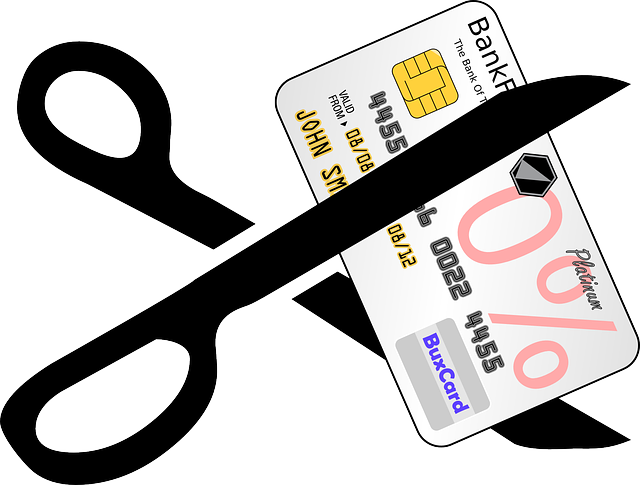
Is Debt Consolidation Right for Your Small Business?
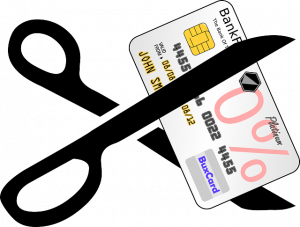 How much debt does your small business have? Research shows that the average U.S. small business has nearly $200,000 of debt. Debt, of course, is one of the most common financing methods for small and large businesses alike. Many entrepreneurs use loans, lines of credit or credit cards to get their businesses up and running. All of this debt, however, can restrict their cash flow and hinder their growth.
How much debt does your small business have? Research shows that the average U.S. small business has nearly $200,000 of debt. Debt, of course, is one of the most common financing methods for small and large businesses alike. Many entrepreneurs use loans, lines of credit or credit cards to get their businesses up and running. All of this debt, however, can restrict their cash flow and hinder their growth.
If your small business is drowning in debt, you might be wondering whether debt consolidation is a smart choice. Debt consolidation involves the use of one form of debt to pay off other forms of debt. There are debt consolidation loans. You can apply for a debt consolidation loan, and assuming you’re approved, you can use it to pay off some or all of your small business’s debt. So, is debt consolidation right for your business?
Advantages of Debt Consolidation
You can save money on interest with debt consolidation. Lower interest fees, in fact, is probably the most common reason small business owners consolidate their debt. Most debt consolidation loans have lower interest rates than traditional business loans. You can pay off other loans with a debt consolidation loan, leaving you only with the latter. And because debt consolidation loans have lower interest rates, you’ll save money on interest fees.
With debt consolidation, you won’t have as many payments to make each month. Debt consolidation is the process of paying off multiple forms of debt using a new, consolidation-based form of debt. If you have two lines of credit and a business loan, for example, you can use a debt consolidation loan to pay them off. Rather than making three payments each month, you’ll only have to make a single payment: the payment for the debt consolidation loan.
Disadvantages of Debt Consolidation
Debt consolidation has its drawbacks as well. Some lenders require collateral. Debt consolidation loans are often “secure” using collateral. When you apply for a debt consolidation loan, the lender will ask for collateral. You may struggle to get approved unless you have sufficient collateral with which to guarantee the debt consolidation loan.
You should consider the long-term costs associated with debt consolidation. If you have to extend a debt consolidation loan, for example, the lender may hit you with fees that take a toll on your small business’s finances.
Have anything else that you’d like to add? Let us know in the comments section below!

The Pros and Cons of Bootstrapping: What You Should Know
 You can’t start a business without securing financing. According to Shopify, most small businesses require about $40,000 for their first year of operations alone. Some small businesses, of course, spend even more money. While there are different ways to finance a new business, bootstrapping is one of the most popular — particularly for small businesses. It involves the use of your own money and financial resources to finance your new business. Here are the pros and cons of using bootstrapping as a financing method for your new business.
You can’t start a business without securing financing. According to Shopify, most small businesses require about $40,000 for their first year of operations alone. Some small businesses, of course, spend even more money. While there are different ways to finance a new business, bootstrapping is one of the most popular — particularly for small businesses. It involves the use of your own money and financial resources to finance your new business. Here are the pros and cons of using bootstrapping as a financing method for your new business.
Pro: Retain Full Ownership
Bootstrapping allows you to retain full ownership of your business. You won’t have to forfeit or sell any equity. You’ll retain complete ownership of your business with bootstrapping. This alone is reason enough for many entrepreneurs to consider bootstrapping as a financing method.
Pro: Easier Approval Process
You may have an easier time getting approved for loans if you use bootstrapping. Bootstrapping is all about using your own money and financial resources to finance your business. Rather than trying to take out loans in your business’s name, you can take out loans in your own name. As long as you have good credit, lenders should approve your application for a loan. Applying for a loan under your business’s name, conversely, may result in rejection. Since your business is new, it probably had little or no credit, so lenders may reject your application.
Con: Limited Financing
While bootstrapping allows you to retain full ownership of your business and has an easier approval process than external financing methods, it may not prove sufficient for your business’s financing needs. You can use your personal savings, credit card and personal loans. But that still may not be enough to satisfy your business’s financing needs.
Con: No Expertise
You won’t be able to take advantage of the expertise of investors with bootstrapping. Rather, you’ll essentially be on your own. Using external financing methods, on the other hand, will allow you to partner with investors who want your business to succeed.
Con: Risk of Personal Asset Loss
You may lose some of your personal assets if you use bootstrapping to finance your business. If you use a personal loan, for instance, the lender may claim ownership of your personal assets in the event of nonpayment. If you default on the personal loan, the lender may then go after your personal assets. Business loans are different in the sense that they separate personal and business assets — unless you make a personal guarantee.
What are your thoughts on bootstrapping? Let us know in the comments section below!
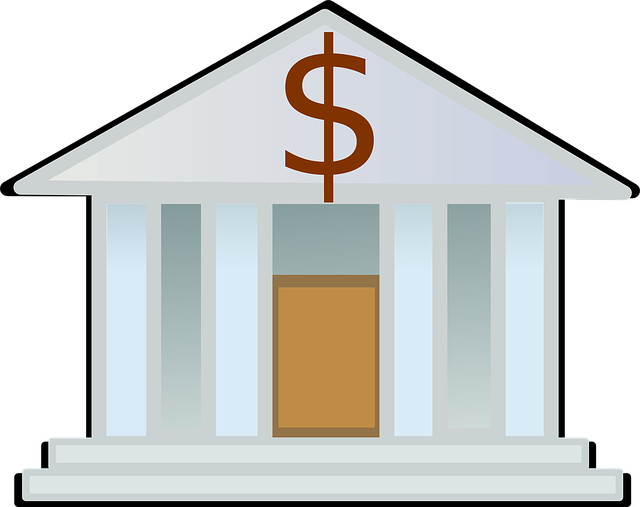
What Is a Venture Capital Fund and How Does It Work?
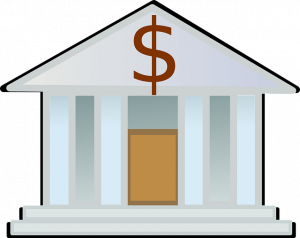 For those who run a startup, collaborating with a venture capital fund may be a wise decision. This move can offer the necessary funds for the growth of your business, without adding any additional debt. While most business owners are aware of the mechanics of business loans, many are unfamiliar with the concept of venture capital funds. What exactly is a venture capital fund and how does it operate? Read on to learn everything you need to know about venture capital funds.
For those who run a startup, collaborating with a venture capital fund may be a wise decision. This move can offer the necessary funds for the growth of your business, without adding any additional debt. While most business owners are aware of the mechanics of business loans, many are unfamiliar with the concept of venture capital funds. What exactly is a venture capital fund and how does it operate? Read on to learn everything you need to know about venture capital funds.
What Is a Venture Capital Fund?
A venture capital fund is an investment vehicle that uses money from many different investors to purchase an equity stake in early-stage businesses. They are typically managed by investment professionals known as venture capitalists. Venture capitalists seek money from other investors. All of the investors pool their money together, which the venture capitalists use to purchase partial ownership in early-stage businesses.
How a Venture Capital Fund Works
There are different parties involved in a typical venture capital fund. As previously mentioned, there are venture capitalists who operate the funds, and there are investors who “buy into” the funds. There are also early-stage businesses that generate capital from the venture capital fund.
Early-stage businesses may struggle to get approved for a loan. They lack the credit and experience of their established counterparts. Therefore, many lenders turn them down. Even if your early-stage business has been turned down for a loan, though, you may be able to secure financing through a venture capital fund.
A venture capital fund may purchase equity in your early-stage business. If the venture capitalist believes your early-stage business will grow and become profitable, he or she may want to invest in it. The venture capitalist will use his or her fund’s money to purchase an equity stake in your business.
Venture capital funds are used for financing, specifically equity financing. There’s debt financing, and there’ equity financing. A business loan is a type of debt financing, whereas a venture capital fund is a type of equity financing.
In Conclusion
Venture capital funds may sound confusing, but they are relatively simple investment vehicles. They focus on buying equity in early-stage businesses. If your business is still new — and you’re struggling to get approved for a loan — you may want to consider financing through a venture capital fund.
Have anything else that you’d like to add? Let us know in the comments section below!

5 Financing Solutions for Businesses With Bad Credit
 If your business has bad credit, you may struggle to secure financing for it. Lenders will typically check businesses’ credit when determining whether to approve or reject their applications for a business loan. Businesses with good credit are more likely to get approved for a loan than those with bad credit. Even if your business has bad credit, though, there are still financing options available for it. Below are five financing solutions for businesses with bad credit.
If your business has bad credit, you may struggle to secure financing for it. Lenders will typically check businesses’ credit when determining whether to approve or reject their applications for a business loan. Businesses with good credit are more likely to get approved for a loan than those with bad credit. Even if your business has bad credit, though, there are still financing options available for it. Below are five financing solutions for businesses with bad credit.
#1) Accounts Receivable Financing
Accounts receivable financing is a financing solution that doesn’t require stellar credit. As the name suggests, it involves the use of accounts receivable. Consisting of unpaid invoices, you can use your business’s accounts receivable to secure financing. Accounts receivable financing is essentially a type of loan that’s backed by accounts receivable as collateral.
#2) Factoring
Another accounts receivable-based financing solution is factoring. The terms “accounts receivable financing” and “factoring” are often used interchangeably. However, they aren’t the same. Accounts receivable financing is a loan that’s backed by unpaid invoices as collateral. Factoring is a financing solution in which a business sells its unpaid invoices to a third party. With factoring, you can sell these invoices for up to 90% of their face value. Even if your business has bad credit, you can still finance it with factoring.
#3) Merchant Cash Advance
A merchant cash advance is an option to consider if your business has bad credit. It involves a bank or lender forwarding money to a business based on the business’s future credit card and debit card sales. If your business processes a lot of credit card and debit card sales, you can leverage a merchant cash advance to secure financing for it.
#4) Secured Line of Credit
Many businesses with bad credit use a secured line of credit. A line of credit is a revolving credit account from which you can draw capital. Unlike with loans, it doesn’t consist of a fixed amount. Rather, lines of credit have a maximum limit, and you can continue to draw capital from them as long you stay within this limit. Secured lines of credit are the same; the only difference is that they are backed by some type of collateral.
#5) Loan With Personal Guarantee
If your business has bad credit, you may want to consider a loan with a personal guarantee. A personal guarantee is a pledge to repay a business loan using your own personal assets. Without it, lenders may reject your business’s application for a loan if your business has bad credit.
Have anything else that you’d like to add? Let us know in the comments section below!

The Pros and Cons of a Merchant Cash Advance for Your Small Business
 When researching financing options for your small business, you may come across merchant cash advances. It’s an alternative form of financing that involves a cash advance based on future credit card and debit card sales. Assuming your small business generates credit card and debit card sales, you can use them to obtain a merchant cash advance. There are both pros and cons associated with a merchant cash advance, however.
When researching financing options for your small business, you may come across merchant cash advances. It’s an alternative form of financing that involves a cash advance based on future credit card and debit card sales. Assuming your small business generates credit card and debit card sales, you can use them to obtain a merchant cash advance. There are both pros and cons associated with a merchant cash advance, however.
Pro: Fast
You can obtain a merchant cash advance in very little time. While traditional business loans can take weeks or even months to obtain, merchant cash advances only require a few days on average. As long as your small business meets all of the necessary requirements, you can get a merchant cash advance in just a few days.
Pro: Not Credit Based
Merchant cash advances aren’t credit based. Why does this matter? Not all small businesses have credit. Even if you have stellar credit, your small business may not have any credit. This isn’t a problem with a merchant cash advance. As previously mentioned, merchant cash advances are based on future credit card and debit card sales. Lenders who offer them pay little or no attention to credit. Instead, they focus on credit card and debit card sales.
Pro: Adjustable Payments
You’ll have to make payments to the lender with a merchant cash advance. The good news, though, is that these payments are adjustable. You won’t have to pay a specific amount each month. Instead, merchant cash advances involve adjustable payments. The amount of your payments will depend on your small business’s credit card and debit card sales. The more card-based transactions your small business processes, the more you’ll typically have to pay.
Con: High Interest Rate
While they technically aren’t loans, merchant cash advances still have interest. You’ll have to pay interest on the amount of your small business’s future credit card and debit card sales forwarded by the lender. And interest rates for merchant cash advances are typically higher than those for traditional business loans.
Con: Doesn’t Build Credit
If you’re looking to build credit, you may want to choose a different financing method for your small business. A merchant cash advance won’t build credit for your small business. You can build credit using a traditional business loan, but you can’t build credit using a merchant cash advance.
Have anything else that you’d like to add? Let us know in the comments section below!
